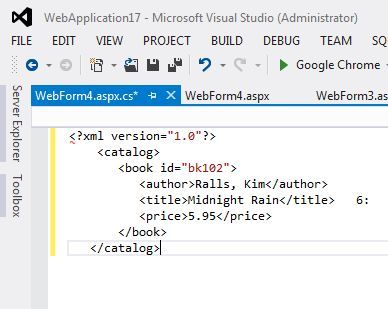I recently ran into an interesting issue when developing a connector for a third-party API. When trying to connect to the API endpoint, I received the following error message:
“An error occurred while making the HTTP request to https://<API endpoint>. This could be due to the fact that the server certificate is not configured properly with HTTP.SYS in the HTTPS case. This could also be caused by a mismatch of the security binding between the client and the server.” Inner exception was “Unable to read data from the transport connection: An existing connection was forcibly closed by the remote host.”
Not very informative at first glance, right?
However, after some digging around I realized that the error message was correct, at least in the following part: “This could also be caused by a mismatch of the security binding between the client and the server.” I checked my SOAP bindings, and everything seemed to be correct: server required SSL connection, and I had TransportLevelSecurity specified in my binding:
var binding = new BasicHttpBinding(BasicHttpSecurityMode.Transport);
After I read more about SSL and Transport Level Security (TLS), I understood that “not all HTTPSs are created equal.” HTTPS relies on a family of lower level security protocol implementations called transport level security (TLS), each using different cryptographic algorithms. TLS standards keep developing and improving. At the moment TLS 1.2 is a latest encryption standard powering SSL and TLS 1.3 is in works. In general, anything that is using TLS standard below TLS 1.2 is considered to be non secure because these older encryption algorithms are known to be cracked.
Apparently, the provider of the API I was trying to call disabled all other security protocols except for TLS 1.2. That was reason I was getting the error.
So, why didn’t .NET framework support TLS 1.2 in my case? Well, that was because my application was using .NET 4.0. In .NET 4.0 default transport level security standard is TLS 1.1. The solution for my problem was to upgrade my application to the latest .NET framework: 4.6.1. In this framework version TLS 1.2 is a default cryptographic standard.
But what if you can’t upgrade your application to latest .NET framework and still want to use TLS 1.2? Solutions exist, but they vary depending on the framework version:
- .NET 4.6 and above. You don’t need to do any additional work to support TLS 1.2, it’s supported by default.
- .NET 4.5. TLS 1.2 is supported, but it’s not a default protocol. You need to opt-in to use it. The following code will make TLS 1.2 default, make sure to execute it before making a connection to secured resource:
ServicePointManager.SecurityProtocol = SecurityProtocolType.Tls12
- .NET 4.0. TLS 1.2 is not supported, but if you have .NET 4.5 (or above) installed on the system then you still can opt in for TLS 1.2 even if your application framework doesn’t support it. The only problem is that SecurityProtocolType in .NET 4.0 doesn’t have an entry for TLS1.2, so we’d have to use a numerical representation of this enum value:
ServicePointManager.SecurityProtocol = (SecurityProtocolType)3072;
- .NET 3.5 or below. TLS 1.2 is not supported and there is no workaround. Upgrade your application to more recent version of the framework.
P.S. For scenario #3 there is also a registry hack which forces 4.5 to use TLS 1.2 by default without enforcing it programmatically.



